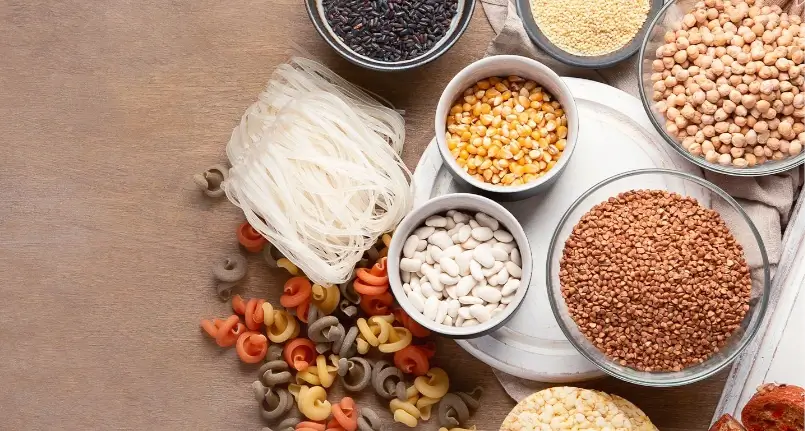Introduction
Dental caries is a bacterial infection whose course is generally slow and which in its appearance involves various factors – internal and external – which compete with each other in giving rise to the disorder.
Among these factors, a place is also occupied by nutrition, as well as, of course, correct oral hygiene . Therefore, it could be said that the health of our teeth also depends on what we eat.
Sugar and Caries
As mentioned, caries is an infection affecting the teeth caused by some microorganisms that populate the oral cavity.
Like all living organisms, bacteria also need food to survive. For this reason they find fertile ground in the food residues that remain between the teeth.
In particular, the nutrients preferred by bacteria are sugars which are used and transformed into lactic acid , a waste product capable of attacking dental enamel and causing tooth decay.
Sugary foods therefore play a decisive role in the formation of caries. The longer these foods stay in the oral cavity, the greater the risk of developing this disease.
Dietary advice to prevent tooth decay
Starting from these two fundamental considerations, a whole series of food rules can be drawn up that should be respected:
Limit the consumption of sugars
The most cariogenic sugars are the simple ones, such as sucrose , glucose and industrial derivatives. However, limiting your direct sugar intake is not enough to prevent tooth decay. Today, in fact, sucrose has become the fundamental ingredient of many foods. It ‘s found in sodas, candy, pasta, and even breakfast cereals . Limiting the consumption of sweeteners is therefore a factor that is hard to control.
Not just sugars
If it is true that simple sugars are quickly used up by bacterial flora , it is equally true that foods containing complex carbohydrates can be equally dangerous. According to the latest research, it seems that the time food remains in the mouth is more important than the amount of sugar it contains.
Sugary foods can therefore be consumed with a certain freedom provided they are followed by adequate oral cleaning. It is also very important that the diet is balanced and that it provides all the vitamins and minerals necessary to guarantee the health of the dental tissues ( calcium , magnesium , fluorine and phosphorus in primis).
Avoid “sticky” foods
Sugary foods that tend to stick to the teeth such as caramel are very dangerous because, as we saw in the previous point, they remain longer inside the oral cavity exposing the teeth to acid attack.
Don’t suck
The bad habit of sucking on candies or chocolates between one meal and another is one of the major risk factors, both because in this way the time sugar remains in the mouth increases, and because they are difficult to follow with adequate oral hygiene.
Green light for polyalcohols and non-cariogenic sugars
In nature there are sugars with very low or even absent cariogenic power , while others are reproduced in the laboratory by man.
Among the most widespread it is good to remember fructose and polyalcohols. Among other things, the latter have a lower caloric value than sugar, and remove the danger of diabetes and overweight . They are non-toxic but have a laxative effect when consumed in excess .
Curiously, some of these sweeteners even have a positive effect on oral hygiene. Let’s think, for example, of xylitol which with its strong antibacterial activity is able to prevent tooth decay.
Attention to your children
Until the end of adolescence one is more exposed to the risk of caries both for constitutional factors (less dental mineralization) and for food (greater propensity to consume sugars).
In fact, at a young age the sensitivity towards the sweet taste is more marked , pushed and amplified by the food industry which offers very appetizing but also very sugary foods. It is estimated that by the age of 6, almost two-thirds of children develop at least one cavity.
The parent can try to educate the child’s palate by reducing the sugar content in home-made foods. In any case, without depriving the child too much, it is essential to impose and teach the importance of correct oral hygiene.
Get used to the palate
Sensitivity and preference for the taste of sweet or salty can also be educated. This process generally occurs spontaneously with advancing age. Not surprisingly, data in hand , after the age of forty the probability of developing tooth decay decreases.
Further Advice
Moving a little from the strictly food sphere, below are his further advice or tricks that can prove useful in the field of caries prevention.
Chew that’s good for you
The mineralization of the teeth is stimulated by the mechanical stresses of chewing. Nowadays between juices, herbal teas , soups and smoothies the stimuli on the teeth are lower than in the past. Especially during the growth period it is therefore advisable to train chewing, both to strengthen the teeth and to improve chewing function.
Using chewing gum
Although chewing gum cannot and should not replace cleaning the teeth with a brush and floss , they can still have some usefulness in the prevention of tooth decay. Those containing protective substances such as fluorine or xylitol are preferable, obviously all those containing sugar are to be avoided.
Chewing gum stimulates salivation which, as we know, contains antibacterial substances and stimulates the rebalancing of the oral pH by alkalizing it.
Summarizing the contents of this article, we can conclude by stating that: “A healthy and balanced diet associated with good oral hygiene is the best way to protect your teeth and remove the risk of caries”.
Other articles to deepen the topic of caries
- Caries: Symptoms, Complications Treatment
- Cavity
- Caries: causes and risk factors
- Types of Caries




